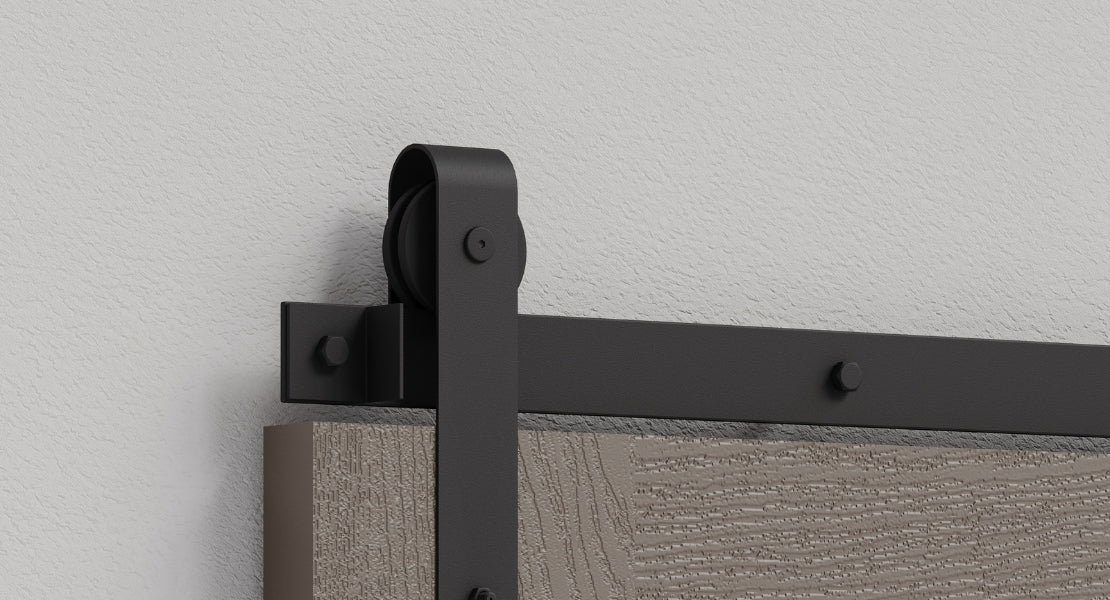
How to Seal a Door for Winter (7 Easy Steps and Tips)
Winter is a season that can bring the serene beauty of snowfall and the coziness of gathering around the warmth indoors.
However, it can also come with an increased need to keep your home protected from the tough, freezing elements!
Whether your house is many years old or newly built, it likely needs better insulation against the weather.
If you are a homeowner wanting to save money on energy bills, this post is for you. It also offers a great DIY project for this winter.
This article is designed to equip you with everything you need to know about how to seal a door for winter. It will provide expert advice and share key insights into the following:
- Materials checklist
- How to seal a door for winter
- Tips to effectively keep your door sealed.
Let’s get started!
Materials Needed
Fortunately, it does not take many extensive measures to ensure that your doors are secure and sealed for winter. Here are some of the essential materials required to get you on the right track:
Door Hardware
To keep your door fully weatherproof for the winter, you need to first check all of its hardware components.
These include doorknobs, locks, hinges, and screws. Furthermore, it’s vital to make sure that your door is hung in the right position to prevent any widening gaps on either side.
Door Sweep
A door sweep is a simple tool that helps keep cold air from coming in through doors. It is also affordable. It is attached to the bottom of your door and made of hard rubber with thick bristles.
Remember to measure the length of your closed door and cut the door sweep to the exact size to make sure that it will fit perfectly!
Door Threshold
A tight and durable door threshold is another approach you can take to prepare for winter weather conditions.
Door thresholds are made to keep water from running through the doors. They help direct water away from the entrance.
Weatherstripping
Adding a weatherstrip around your door is one of the most common methods of weatherproofing it.
Weatherstrips are pieces of material placed around a moving part. They fill gaps but still let the part open and close. They are very easy to install. You can cut them to any size. They usually come with a self-adhesive strip.
Draft Guard
A draft guard or door snake is an easy and effective way to stop air leaks from your door!
It is a weighted fabric-covered tube that functions as a form of insulation. You can either purchase these or make one yourself if you can sew. Make sure to tuck each side closely to the door to seal any draft gaps.
Caulk
Using a simple tube of caulk can help stop cold drafts in your home during winter.
While caulk is usually applied when a door is initially installed, it has a tendency to deteriorate over time. The good news is that you can always add a new layer once the damaged caulk is removed!
Steps to Seal the Door
Did you know that air leaks can account for up to 40% of heating loss in your house during the winter?
Let’s dive into the steps you can take to seal your doors and protect your home from even the worst winter conditions:
Tighten the Hinges
Air leaks can commonly enter through your food hinges if they have been moved over time from where they were originally placed.
Before you proceed with the next steps on our list, you can check your door’s hinges by lifting the door by its doorknob. If it moves upward, you can solve this by tightening the upper hinge screws inside the door jamb.
Also, it’s important to make sure all the other hardware is properly fitted and in good condition.
If they are not tightly fit and the door is loose, draughts can easily pass through! In these cases, it might be time to update your door hardware and replace any loose screws, locks, doorknobs, or hinges.
Install a Door Sweep
Adding a door sweep to the bottom of your doors is a quick way to keep out air leaks during the winter.
A secure and well-installed door sweep creates an air-tight seal and can easily be attached without trimming your door. If your floors are uneven, you can even opt for door sweeps with rollers to compensate.
There are different types of door sweeps that you can buy. These include heavy-duty, brush, and drip-cap. They also come in a wide array of materials such as vinyl, aluminum, and many more.
To remove the old door sweep, all you have to do is pry it off with a utility knife. Then, simply screw the new one into place with the screws provided.
Check for Air Leaks
While it is entirely possible to seal all the doors in your home, it’s crucial to first detect the draftiest locations. Here are some of the most effective and efficient ways to find air leaks:
- Close the door completely and look around the doorframe for any sunlight passing through
- At night, use a flashlight on one side of the door and watch for traces of light beams on the other side
- Move a lit candle throughout the edges of the door. Smoke will be moving in the direction of a draft and air leaks will make the flame flicker
- Identify any cool breezes by putting a damp hand over any suspected areas.
Seal the Gaps
Not only do unfilled gaps allow cold air to enter your house but they also entice outdoor pests to make their way in.
After you’ve located the gaps around your door, the next step is to assess their size! Even out those gaps by resetting your door hinges. Adjust the strike plates to ensure the door fits securely in the frame.
If your door is warped, you can seal the gaps by using foam tape. For a stronger alternative, you can try highly sticky foam tape.
All you need to do is cut it to the right size and secure the tape over the gaps where the air leaks are passing through.
Add Weatherstripping
Weatherstripping is one of the most effective measures against cold air during the winter season. Even a novice can install weather strips since they do not require any special tools!
You can find a wide array of weatherstripping materials at your nearby hardware store. These range from metal flange, silicone bulb, vinyl, or wrapped foam.
No matter what material you choose, make sure it is cut to fit the length of your door. This will help it compress tightly.
Once you thoroughly clean the door frame, it’s time to tack the weather strips into place. For a snug fit, remember you open and close your door a few times throughout the installation process.
Use a Draft Guard
Using a draft guard, also known as a door snake, can easily block out any air leaks from your door. They serve as added insulation to keep any unwanted chill from entering.
Draft guards are readily available at any hardware store and you can even opt to make your own.
If you are not very confident in your crafting skills, just roll up a towel. Place it next to any gaps in your door. This will work just fine!
For good measure, you can also opt for a door threshold or draught excluder. They ensure to minimize any potential heat loss from the gaps beneath the door.
Caulk Your Door Frame
Caulk is a material that can serve as an excellent barrier against the cold winter weather. When applying caulk around your door be sure to pay extra attention when filling the visible cracks.
Allow it to dry overnight and apply more caulk if you continue to see gaps between the door and the door frame. Any leftover caulk can even be used for your drafty windows.
As previously mentioned, the caulk around your doors can deteriorate over time and lose its effectiveness. As such, it’s always a good investment to have a few tubes ready to refresh the seal.
Additional Tips
When you ensure your doors are fully sealed in winter, you protect your home and save on utility bills.
Let's take a look at a few extra tips to help reduce heating costs and enhance your home’s energy efficiency:
- Window Film - Window film looks similar to the kind of plastic wrap that is used to cover food. It works well as extra insulation in winter. Just remember to use a blow dryer after putting it on your window. This will help seal out drafts
- Insulated Curtains - Utilizing thermal curtains is another great measure to create more insulation in your home. You can further retain heat during the winter by simply keeping them closed!
- Keep the Door Locked - This last tip won’t cost you anything at all and is highly effective for blocking out cold drafts.
Since a door’s lock pulls it tighter into the door frame, getting into the habit of turning the deadbolt will create a stronger air-sealing barrier to the winter weather.
Shop for the hardware you need at The Barn Door Hardware Store.


